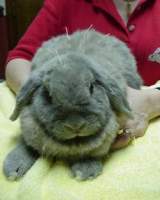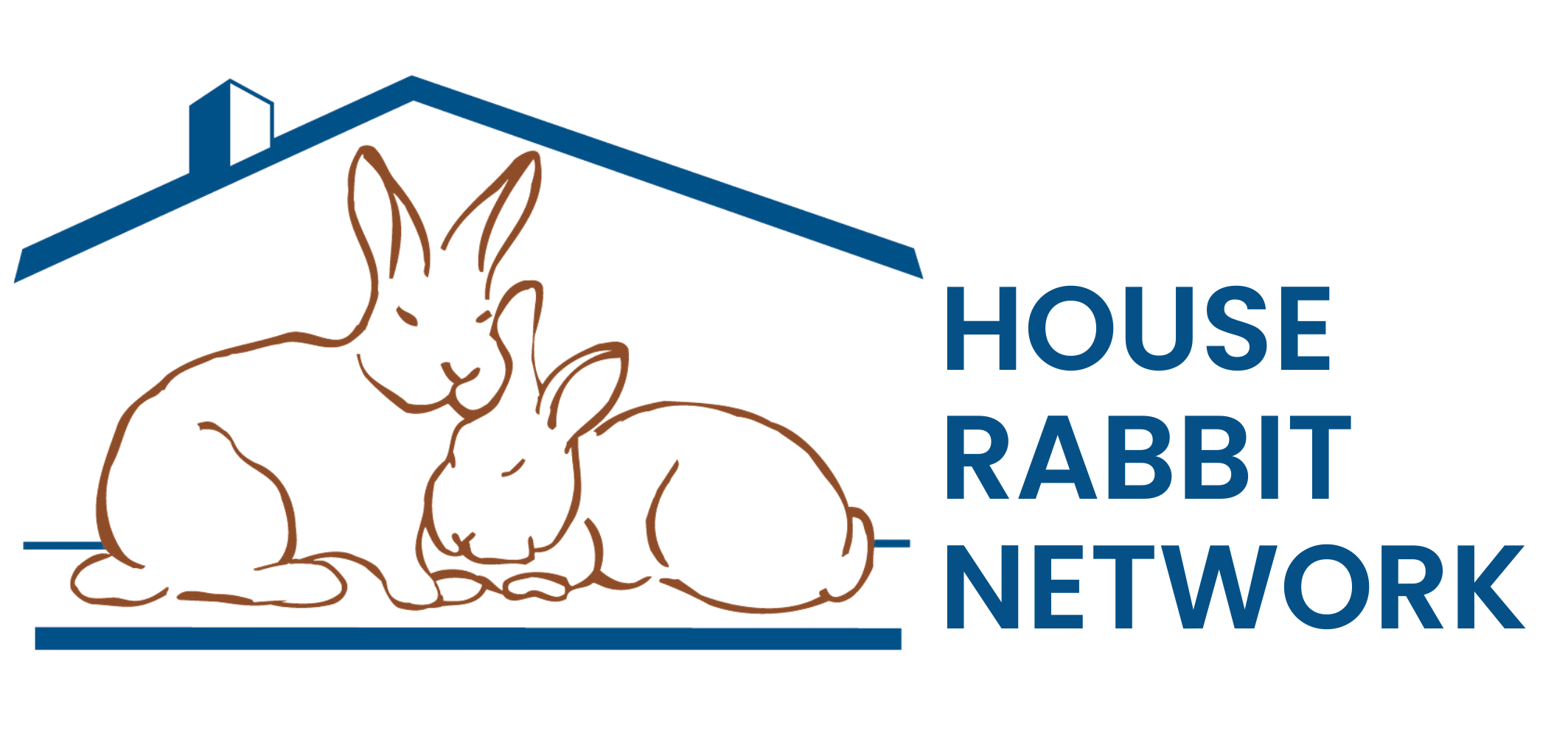Is Holistic Medicine Right For Your Rabbit?

Across the country, a growing number of rabbit caretakers and their veterinarians are turning to holistic medicine either in conjunction with traditional western medicine or, on rare occasions, instead of traditional treatments. Traditional western medicine, the medicine most of us are accustomed to for both humans and animals, focuses on identifying and treating specific symptoms and diseases. Traditional treatments (usually prescription drugs) can be very effective but often cause undesired side effects in another part of the body: steroids suppress the immune system; pain medications can cause GI bleeding; antibiotic therapy can cause an overgrowth of yeast.
In holistic medicine, both examination and treatment focus on the patient as a whole, reducing the probability that treatment of one symptom or disease will create a problem in a different part of the body. Holistic medicine includes acupuncture/acupressure, chiropractic treatment, herbs, homeopathy, Reiki, and T-Touch. Each of these techniques is aimed at restoring balance within the body and stimulating the body to heal itself. Because holistic medicine treats the patient as a whole, it can sometimes succeed where traditional medicine has failed. This is particularly true of problems for which a “root cause” cannot be determined.
There are a few medical conditions for which holistic treatments alone may be appropriate. In some rabbits, acupuncture has been able to manage chronic pain well enough to reduce or even eliminate the need for western medicine’s pain killing drugs. For conditions such as cancer, for which there is no proven traditional treatment, some people choose herbs and/or homeopathy over options like radiation and chemotherapy – both of which are much more expensive and have side effects that can significantly reduce quality of life.
More often, however, holistic treatments are used in conjunction with traditional western medicine. My introduction to holistic medicine came through Murray, who has a number of conditions that require frequent traditional treatments. These include filing molar spurs under anesthesia, treatment of ear and urinary tract infections with antibiotics, fluids to keep sludge under control, and Propulsid® to manage the GI slowdowns. The holistic treatments he receives-chiropractic adjustments, acupuncture, and herbs-help him weather the side effects of frequent anesthesia and antibiotics. In the three years that Murray has been receiving holistic treatments, his GI slowdowns have been less frequent, less severe, of shorter duration, and have been manageable with fewer drugs. In addition to helping him with his physical ailments, holistic medicine also helped him through losing both of his life-long companions in a five-month period without suffering the severe depression that rabbits often experience when they lose a bonded mate.
More information on alternative veterinary medicine, including a list of holistic veterinarians by state, is available at: http://www.altvetmed.org.
Acupuncture/Acupressure
Acupuncture and acupressure are based on the concept that the body has an orderly arrangement of energy lines running through it. Disease occurs when these energy lines or meridians are blocked, weakened, or deficient in some way. Acupuncture points are points along these meridians, each of which is associated with a specific part of the body or organ system. Acupuncture points are arranged symmetrically, with corresponding points on the left and right sides of the body.
In acupuncture therapy, special solid metal needles are inserted in the acupuncture point or points that are associated with the physical problems being treated. Needles are left in place for roughly 15 minutes, during which time they stimulate the flow of energy through these points. Despite the use of needles, acupuncture is relatively painless. Occasionally, a rabbit will object to placement of one or two needles in particular. Certain points seem to stimulate this response in most rabbits while others may actually indicate a point that needs stimulation. Sometimes a needle can be inserted in the corresponding point on the opposite side of the body without causing the same reaction. Acupressure is based on the same principles as acupuncture – stimulation of the same acupuncture points is done using gentle finger pressure rather than needles.
Acupuncture and acupressure have been helpful in treating a number of conditions including: chronic pain, head-tilt symptoms, chronic GI slowdowns, heart, liver, and kidney failure. While you may notice improvement after only one acupuncture treatment, it may take three to eight treatments to fairly determine whether acupuncture is benefiting your rabbit. You should be willing to try a minimum of three to four treatments before giving up on the healing possibilities of acupuncture.
Chiropractic Treatment
Chiropractic treatment is based on the concept that pain and many other physical disorders are caused, at least in part, by misalignment of the spine. Chiropractors believe that when spinal vertebrae are properly aligned, impulses from the brain can travel freely through the spinal cord to the body’s organ systems and maintain their healthy function. When there is misalignment, the flow of these impulses is disrupted, leading to pain and other physical ailments. By returning the spine’s alignment to its normal state, the nervous system can again function properly and the body can heal itself.
Older bunnies and those requiring frequent handling are likely to benefit from chiropractic treatments. When you look straight at your bunny (not from an angle), carefully observe whether one eye seems higher than the other or one eye seems to bulge more than the other. Both of these are indications that your bunny may benefit from chiropractic treatment.
Chiropractic treatment begins with a thorough examination of the rabbit to identify spinal misalignments. Adjustments may include one or more of the following techniques: gentle manipulation to restore proper alignment, manipulation of the vertebra with a hand-held, rubber-tipped instrument, doctor-assisted stretches and gentle massage. Because of a rabbit’s fragile bone structure, it is especially important that your veterinary chiropractor has experience with rabbits or at least recognize how easily rabbits can be injured by improper handling.
Herbs
Rabbits are ideal candidates for herbal remedies because, as herbivores, they willingly eat many medicinal herbs in their natural form (usually a root, leaf, or seed). According to my holistic vet, Dr. Randy Kidd, offering herbs in this form allows the body to get the benefit it needs without having to worry about giving the proper dose and without the stress of giving medicine.
Some of the herbs we regularly include in our rabbits’ salads have medicinal properties. Parsley relieves gas, stimulates normal GI activity, and helps bladder, kidney, liver, and lung functions. Dandelion cleanses the bloodstream and is excellent for treatment of kidney and liver disease.
If given in their natural form, many rabbits will also willingly eat herbs which are usually administered as medicine. Here are some examples
- Milk Thistle helps take ammonia from the blood and protects both the liver and the kidneys.
- Kava Kava calms and extends the benefits of chiropractic adjustments.
- Echinacea is an anti-inflammatory with anti-viral properties.
- Oregon Grape Root is an anti-inflammatory with anti-bacterial properties.
- Uva Ursi is a diuretic and urinary antiseptic that is recommended for urinary tract infections and kidney problems.
- Willow and birch can be offered for chewing. Both are natural pain relievers. Birch is also an anti-inflammatory and can be used as a diuretic.
Even though herbs are “natural”, they can still interact with drugs your rabbit may be taking. Be sure your holistic veterinarian is aware of any medications your rabbit is taking and make sure your primary care veterinarian is aware of any herbs your rabbit is being given.
Reiki
Reiki is an ancient healing technique based on belief in a Universal Life Energy, which is all around us and has healing powers. Reiki practitioners have been attuned by a Reiki Master to be a channel for transferring the life force’s healing energy to others. There are different levels of Reiki training: Practitioners with only Level I training must have physical contact with the patient. Level II training allows the practitioner to direct healing energy without physical contact. Level III Reiki Masters can teach and attune others.
The healing energy of Reiki must be directed at something specific (a specific person or animal and a specific problem area such as the GI or ears), but it cannot be directed for a specific outcome. It treats the entire person or animal, including mind, body, and spirit and has been used for pain management, healing, relaxation, and promoting general well being.
TTouch
Developed by internationally recognized animal expert, Linda Tellington-Jones, TTouch is a process of awakening the cells in the body to increase body awareness and release tension. The approach is fairly basic: using your fingers and hands you apply various circular patterns with different amounts of pressure. You can use it on the entire body with select patterns being used for specific ailments. Ttouch is used for both health and behavioral issues. It deepens the bond between human and animal.
©2002- Kathy Smith
